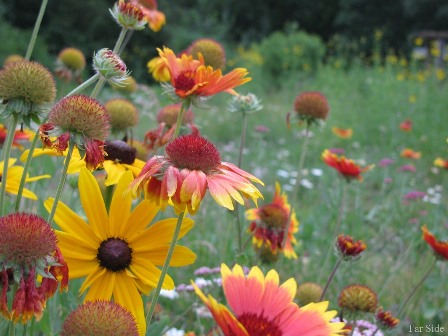On Sunday, May 1, our Board of Parish Ministry invites us to worship services centered in the theme, The Wisdom of Flowers. The structure of the service is Unitarian Universalist in its origins and often called a “Flower Communion,” because of its intention to provide ritual that is inclusive of all and celebrates connection to Earth. Everyone is asked to bring a flower to church. Many UCG’ers also are providing artwork, presentations, music, children’s story, readings, and prayers. As we ministers travel to the Florida Conference Spring Gathering, we are grateful to BPM and to all for the important and creative work done to make these worship services so special.
If you wonder about the history of the Flower Communion idea, I share with you this wonderful article by Reginald Zottoli.
“The Flower communion service was created by Norbert Capek (1870-1942), who founded the
Unitarian Church in Czechoslovakia. He introduced this special service to that church on June
4, 1923. For some time he had felt the need for some symbolic ritual that would bind people
more closely together. The format had to be one that would not alienate any who had forsaken
other religious traditions. The traditional Christian communion service with bread and wine
was unacceptable to the members of his congregation because of their strong reaction against
the Catholic faith. So he turned to the native beauty of their countryside for elements of a
communion which would be genuine to them. This simple service was the result. It was such
a success that it was held yearly just before the summer recess of the church.
The flower communion was brought to the United States in 1940 and introduced to the
members of our Cambridge, Massachusetts, church by Dr. Capek’s wife, Maja V. Capek. The
Czech-born Maja had met Norbert Capek in New York City while he was studying for his
Ph.D., and it was at her urging that Norbert left the Baptist ministry and turned to
Unitarianism. The Capeks returned to Czechoslovakia in 1921 and established the dynamic
liberal church in Prague; Maja Capek was ordained in 1926. It was during her tour of the
United States that Maja introduced the flower communion, which had been developed in the
Prague church, at the Unitarian church in Cambridge. Unfortunately, Maja was unable to
return to Prague due to the outbreak of World War II, and it was not until the war was over
that Norbert Capek’s death in a Nazi concentration camp was revealed. From this beginning
the service has spread to many of our Unitarian Universalist congregations and has been
adapted along the way.
People were asked to bring a flower of their choice, either from their own gardens. or from the
field or roadside. When they arrived at church a large vase stood waiting in the vestibule,
attended by two young members of the Church School. Each person was asked to place their
own flower in the vase. This signified that it was by their own free will they joined with the
others. The vase that contained all the flowers was a symbol of the united church fellowship.
The young attendants helped with the arrangement of the bouquet. Later they carried the vase
up to the front of the auditorium and placed it on a table there. Dr. Capek then said a prayer,
after which he walked over and consecrated the flowers while the congregation stood. The
two attendants then took the vase back out into the vestibule.
After the service, as people left the church, they went to the vase and each took a flower from
the vase other than the one that they had brought. The significance of the flower communion
is that as no two flowers are alike, so no two people are alike, yet each has a contribution to
make. Together the different flowers form a beautiful bouquet. Our common bouquet would
not be the same without the unique addition of each individual flower, and thus it is with our
church community, it would not be the same without each and every one of us. Thus this
service is a statement of our community.
By exchanging flowers, we show our willingness to walk together in our Search for truth,
disregarding all that might divide us. Each person takes home a flower brought by someone
else – thus symbolizing our shared celebration in community. This communion of sharing is
essential to a free people of a free religion.”
I feel so blessed that we, who also would describe ourselves as “free people of a free religion” have the opportunity to share in this wonderful ritual! Have a beautiful weekend, filled with the beautiful wisdom of flowers!
Shelly

